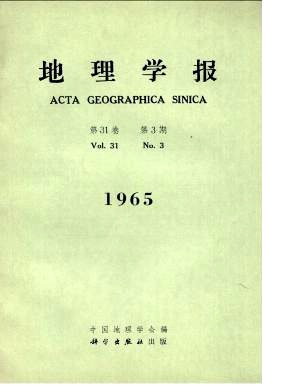YANG HUAI-]EN, CHIU SHU-CHANG
An attempt is made in the following pages to show the evidences of Pleistocene and recent climatic fluctuations in the region of upper Urumchi valley, Sinkiang, based on the field work carried out during the summer of 1960. Most of the 55 present glaciers owe their existence to an exceptionally favourable exposition (Plate 1).The present glaciers occupying their ancesters' cirques are heavily loaded with ablation moraines. We observed moraine-covered dead ice masses immediately downstream from the tongue of a present glacier (Plate 2).A few hundred meters from the tongue of the "No. 1 glacier' we observed successive crescent-like end moraines which lack plant cover and weathering rings (Plate 5).Above features prove that the glaciers are in a state of re- treat and thinning. Between the `fresh' moraines and the oxidized, plant covered and moderately dissected Pleistocene moraines, there is a marked difference. A detailed study into their weathering rings and depositional forms of these new and old moraine will throw much light on the understanding of the climatic variations in eastern Tien Shan: (1) Some of the present glaciers having shrunk to a considerable degree even under the present condition seem improbable to endure the warm period of the Climatic Optimum and consequently they cannot be considered as the direct survivor of the last glacial period. (2) The fresh moraines overlying unconformably and thrusting upon the older glacial deposits were the products of regeneration and expansion of glaciers during the Little Ice Age. The present glaciers, are the direct survivors of the Little Ice Age which was a dominent cold phase in eastern Tien Shan after the Climatic Optimum. (3) From comparative studies of the older glacial moraines in the mountainous region, three main phases of shadia or readvances during the general retreat of the last glacial period can be established. The Pleistocene glaciations were characterised by their greatly developed outwashes. A series of cones were built up with their apices situated at the breaches of mountain gaps of northern Tien Shan, where large quantities of Pleistocene melting water were issuing from. The Tien Shan outwash plains with their loess covers provide the basis of Pleistocene chronology and the ground of geomorphological hypothesis concerning the mechanics of river deposition and erosion and the origin of the formation of depositional terraces beyond the glacial borders. Fluvial, fluvioglacial and periglaeial terraces have been beautifully developed in the intermountain basin of Ho-shia and the uplifted out-wash plains in northern Tien-Shan (Fig.6, 7).Due to tectonic movements as well as climatic conditions the outwashes are of very large scale and great thickness. The oldest outwash plain being more than 400 meters thick was uplifted to 2200 m above sea level ( Fig. 7 ).Even the lowest terrace deposits had been faulted. The Pleistocene tectonic movement being in active operation in recent time, has been playing an important role in the climatic and structural geomorphology of the Tien Shan. As a result of Pleistocene differential uplifting, floors of cirques and other features of the same glacial period have been placed at different elevations in different places. Repeated glaciations of the mountainous regions result in the building of successive outwash fans and valley trains, separately identifiable in surface form and in exposed sections. The available evidences indicates that the oldest glaciation has built the largest outwash plain while the younger glaciations have built smaller ones. The outwash masses and fluvial deposits were beautifully terraced owing to the changes of the mechanics of fluvial erosion and deposition during the advance and retreat of mountain glaciers. The genetic relationship of Pleistocene depositional terraces to the advance and retreat of mountain glaciers has been critically examined by the authors.
